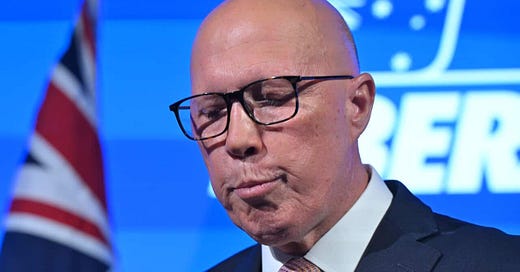
A Hungry Christmas
Christmas is characterised by the ubiquitous plentiful Christmas lunch. However, many Australian families will struggle to afford to put food on the table, as they face food insecurity troubles.
Defining Food Insecurity
According to the Food and Agricultural Organization (FAO) of the UN, food insecurity is defined as “whenever the availability of nutritionally adequate and safe foods, or the ability to acquire acceptable food in socially acceptable ways, is limited or uncertain.”
Food insecurity is ascertained by one simple question: “In the past 12 months, were there any times that you ran out of food and couldn’t afford to buy any more?”
Reasons for food insecurity in Australia
Cost of living is most often cited as the main reason for food insecurity. Cost of living pressures have been exacerbated by a number of factors.
Above average inflation: In January this year, the CPI headline reading of 7.8% was the highest since 1990. This figure has remained around this mark all year. Recently, the RBA stated that inflation won’t return to target range (2% to 3%) until the end of 2025.
Elevated food inflation: Data indicate that food prices will continue increasing by up to 10% each year. This will increase the average household’s annual grocery bill of $13,000 by ~$108 per month.
Industry levies are insidious. Just like a tax, the cost filters through supply chains, affecting the end consumer.
Elevated interest rates:Mortgage payments increased 71% YOY this year, as people came off fixed-rate mortgages and on to higher variable rates. By the end of this year, 48.5% of total borrowers will require 30%+ of their income to service their mortgage, according to Australian National University’s Australian tax and welfare system model.
Declining household savings: Increasing mortgage repayments and inflation have seen the average household savings ratio drop to 1.1% – the lowest level since 2007.
Wages unable to keep up: The Australian Bureau of Statistics says the wage price index increased 1.3% in Q3, the biggest quarterly rise in the 26-year history of the report. Simultaneously, the RBA raised interest rates to a 12-year high of 4.35% in order to combat a CPI increase of 5.4% over the 12 months to September 2023 quarter.
Libertarian solutions
As Adlai Stevenson said, “A hungry man is not a free man”. Addressing food insecurity from a libertarian perspective requires furthering freedom and voluntary cooperation. In practice, this includes minimising government intervention to maximise efficient allocation of resources and productive output.
Australian farmers are essential for our food production and security. According to the Department of Agriculture, Fisheries and Forestry (DAFF), most of the food sold within this country is supplied by Australian producers.
National Farmers Federation’s (NFF) recent campaign made a stand against expanding government intervention, claiming “food production is not a central priority for the current Federal government”. NFF went on to add that Labor is running a “niche ideological agenda” and “wilfully ignorant of the plight of farmers”. To support these claims, NFF cited a recent survey finding a majority of farmers think the Labor government’s policies are harming the agricultural industry.
Contributing to this sentiment is the federal government’s proposition to introduce a new Biosecurity Protection Levy from the 1st of July 2024. According to the DAFF, “taxpayers, importers, international travellers and producers” would be subjected to this cost.
Cost of living is most often cited as the main reason for food insecurity.
In their research paper ‘Towards Levyathan? Industry levies in Australia’, the Productivity Commission included a case study on the Biosecurity Protection Levy. This report is unerring in its analysis of government motivation for opting for the levy structure. The report:
Suggests that targeted industry “levies” may encounter less community resistance compared to broad tax increases.
Highlights the public’s immediate concern with direct costs of taxation, emphasising the potential favourability of perceived indirect costs of an efficient tax system.
Notes that people may view levies more positively, assuming they are not directly impacted, creating a phenomenon termed “fiscal illusion.”
Industry levies are insidious. Just like a tax, the cost filters through supply chains, affecting the end consumer. In this case, further increasing grocery bills for families across Australia. The report asks and answers two important questions:
Will levy payers be in a position to monitor and influence how levy proceeds are used?
How will primary producers know whether levy proceeds are going to activities that they value?
The answer: unclear, but unlikely. Levy proceeds will only fund a proportion of overall biosecurity activities, and it is not proposed that those revenues will be allocated to particular activities.
As libertarians, we stand in opposition to the appropriation of funds for opaque causes. It is essential we “watch the watchmen”, and advocate fiscal responsibility and austerity. This is an important part of our work to spread a singular life-giving, flourishing freedom throughout our country, including affordable food.
The post A Hungry Christmas appeared first on Liberty Itch.












